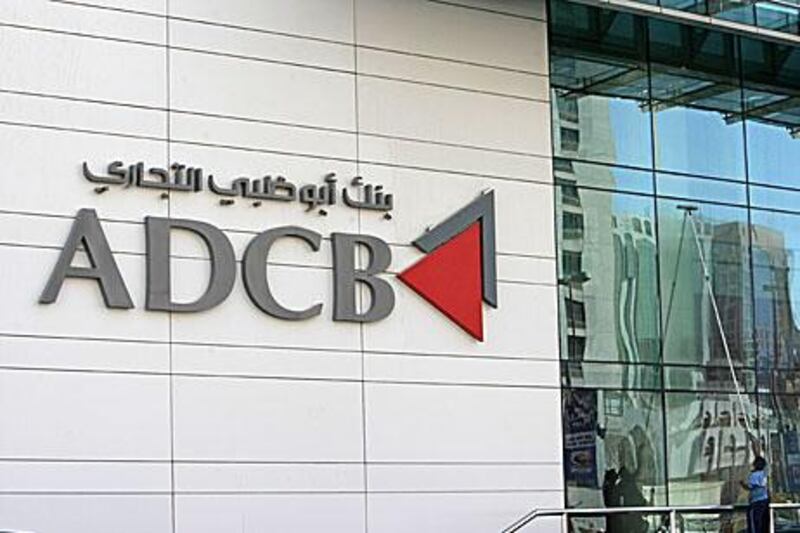Abu Dhabi Commercial Bank's (ADCB) moves in structured investment products during 2006 and 2007 were part of a strategy that made the lender, owned by the Government, one of the region's most sophisticated investors and a key Middle Eastern partner for some of Wall Street's biggest firms.
But while buying into structured investment vehicles (SIVs) such as Cheyne Finance and Stanfield Victoria gave ADCB a portal into some of the most high-flying and hard-to-understand investments in the world, fallout from the credit crunch and sub-prime mortgage crisis in the US has turned the bank from one of the Gulf's most sophisticated investors into one of its most aggrieved.
In addition to SIVs, ADCB was exposed to the US mortgage crisis through collateralised debt obligations (CDOs), which packaged home loans and sold them to investors as securities. It also has one of the largest exposures among local banks to Dubai World, the Government conglomerate that recently reached a pact to restructure US$24.9 billion (Dh91.45bn) of debt.
"Since 2008 there's been a lot of negative news," said Nancy Fahmy, an analyst at Beltone Financial in Cairo. "They had sub-prime debt and they had one of the biggest exposures to Dubai World. It's known for negative news."
ADCB yesterday sued Credit Suisse, the Swiss investment bank, and Standard and Poor's (S&P), the credit ratings agency, in New York. The bank alleges they misrepresented a risky restructuring of the Stanfield Victoria SIV as safe. ADCB had earlier sued Morgan Stanley, Moody's Investors Service and S&P over the Cheyne transaction, a case that has yet to be decided.
The investments and subsequent lawsuits demonstrate how the fallout from the first stages of the global financial crisis continues to affect Gulf institutions such as ADCB despite a more recent focus on conservatism, the insulation provided by deposits of oil revenues and the thousands of kilometres separating them from bankers in the US and Europe who arranged CDO and SIV investments.
SIVs were some of the first dominoes to fall as the US credit crunch took hold in 2007. Such vehicles typically raised short-term money by selling debt, then used the proceeds to invest in longer-dated assets that produced high returns. An SIV's profit was the difference between the interest it paid to borrow money and the returns it made on investments, which often included mortgage-backed securities, portfolios of credit card loans and slices of corporate debt.
The model worked during the global credit boom, when short-term financing was easily and cheaply available. But by late 2007 SIVs faced a daunting challenge. Banks and investors were pulling back on financing, jeopardising their cash lifeline. At the same time, mortgage customers began to default in greater numbers than anticipated, sending the value of key SIV investments tumbling.
Cheyne Finance, a vehicle run by the hedge fund Cheyne Capital Management that held assets of $8bn at its peak, was the first SIV to fail. It collapsed in October 2007 because of falls in the value of its portfolio of residential mortgage securities and banks' reluctance to continue lending it money. A rash of failures followed, with Citigroup closing seven SIVs in December 2007 and taking $58bn of their debts on to its own books. Standard Chartered put its SIV, called Whistlejacket, into receivership in February 2008. By that October, nearly all of the 30 SIVs in existence had failed.
SIVs' struggles coincided with a multitude of other factors, including the failure of CDOs and other complex investment products, to touch off a financial crisis that has affected virtually every country in the world, constraining economic growth, sending markets downward and raising fears of sovereign defaults in Europe.
SIVs are often classed as part of the "shadow banking system", a set of complicated structures which "operated as banks without being banks, raising resources in the short term, operating with very high leverage and investing in long-term and illiquid assets", according to a description by Maryse Farhi and Marcos Antonio Macedo Cintra, a pair of Brazilian academics.
ADCB is now trying to put the turmoil squarely behind it. The bank, which returned to profit in the third quarter of the year after posting major losses, is trying to recover money it lost through the US legal system, mirroring attempts other investors have made in the US and the UK courts. The Cheyne case has dragged on for more than a year, but ADCB scored a major victory in September last year when a US judge ruled that S&P could not wriggle out of liability on the basis that its ratings were protected by free speech rights.





